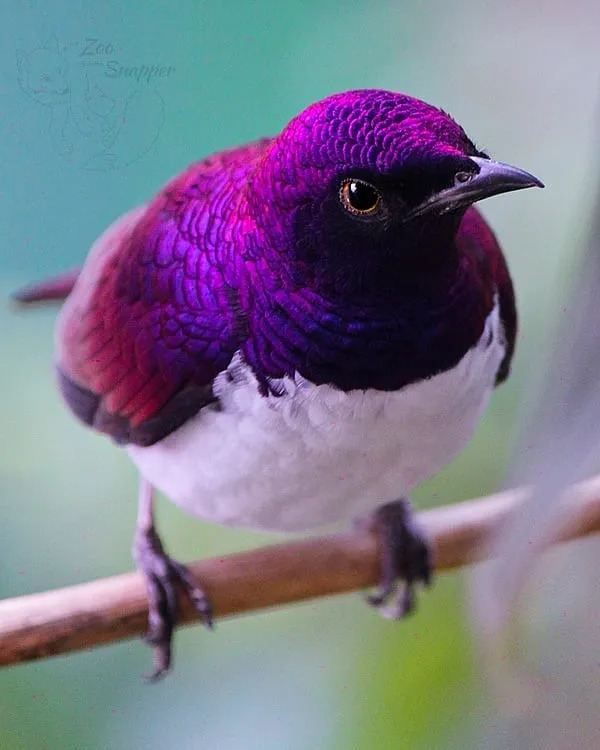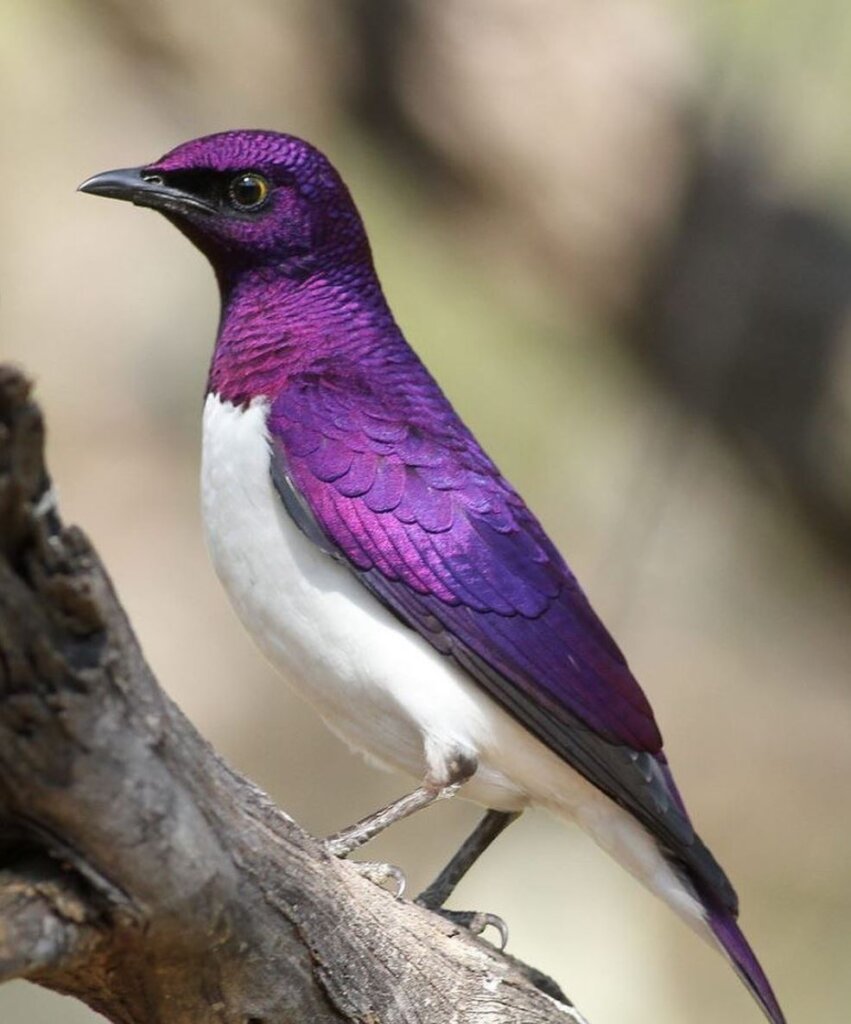
The Violet-backed Starling, scientifically known as Cinnyricinclus leucogaster, is a small passerine bird native to sub-Saharan Africa. What sets this bird apart is its mesmerizing plumage, particularly the striking violet patch on its back, which gives it its name. The feathers of the Violet-backed Starling are a sight to behold, shimmering with iridescence under the sunlight. Its back feathers display a vibrant violet hue that contrasts beautifully with the rest of its body, which is mostly glossy black. This iridescence is not due to pigments but rather the structural arrangement of the feather cells, which refract light to produce vivid colors. The starling’s wings and tail feathers also contribute to its captivating appearance, featuring hues of blue and green that seem to change depending on the angle of the light.

Observers of the Violet-backed Starling often find themselves entranced by its beauty as it flits among the branches of trees or perches on fences and wires. Its striking appearance makes it a popular subject for birdwatchers and photographers alike. Beyond its aesthetic appeal, the Violet-backed Starling is also known for its melodious song, adding another layer of charm to its presence.

In terms of behavior, these starlings are typically social birds, often found in small flocks or mixed-species groups. They forage for food in open grasslands, agricultural fields, and savannas, feeding on a varied diet that includes insects, fruits, and seeds. During breeding season, males engage in elaborate courtship displays to attract mates, showing off their vibrant plumage and singing songs to woo potential partners.

Conservation efforts for the Violet-backed Starling are relatively limited, as it is not considered a species of conservation concern due to its widespread distribution and stable population. However, like many other bird species, it faces threats such as habitat loss and fragmentation, as well as potential impacts from climate change. Continued monitoring and conservation initiatives are crucial to ensure the long-term survival of this stunning bird species, allowing future generations to continue admiring the spectacular feathers of the Violet-backed Starling in the wild.






